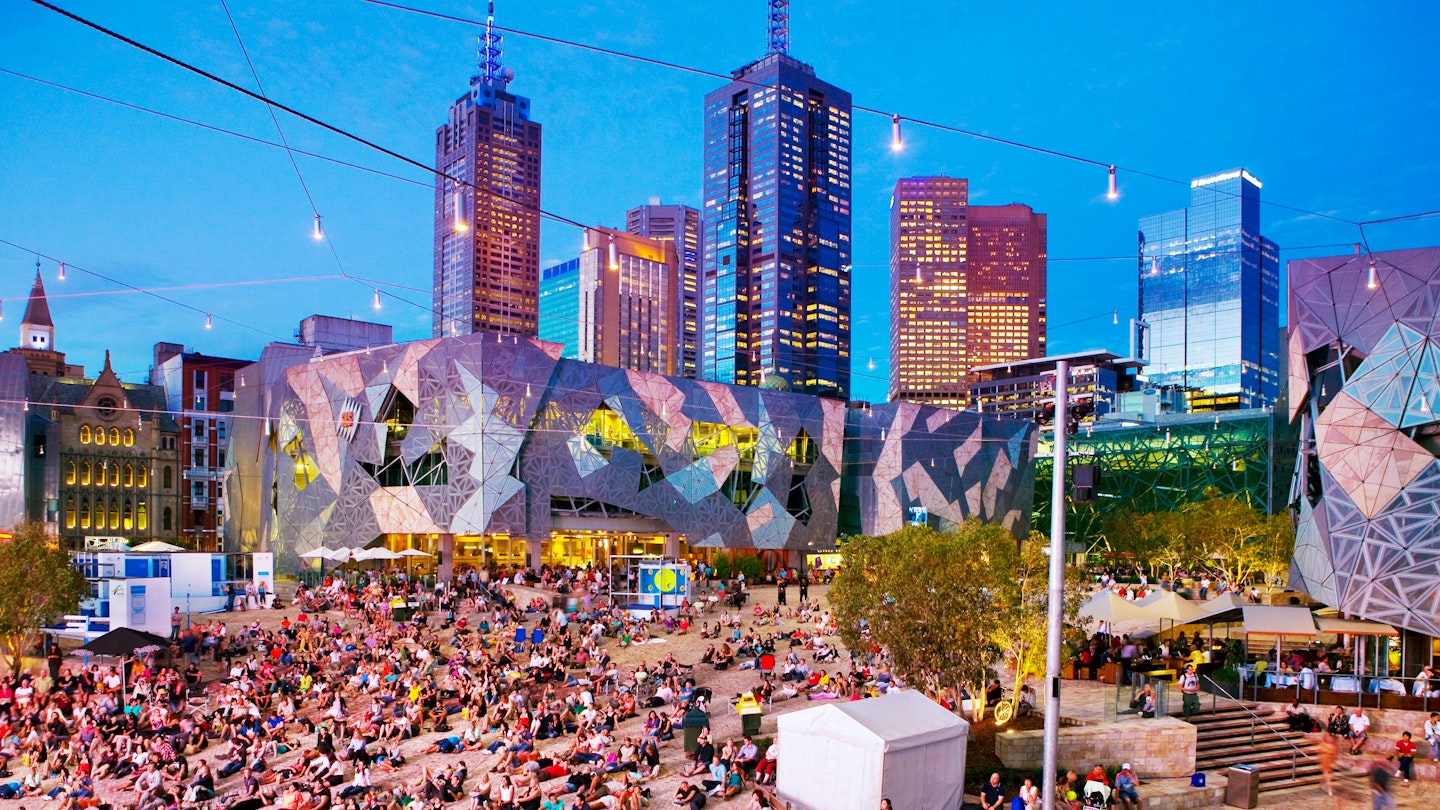Although its visitor numbers can vary, Melbourne is an exceptional city to explore throughout the year.
With more temperate weather than its northern Australian counterparts like Sydney and Brisbane, this cosmopolitan hub is famous for its indoor cultural attractions, including dining, bars, theater, live music, and shopping, all of which can be enjoyed, regardless of temperature. Moreover, Melbourne proudly claims the title of Australia’s sporting capital—cricket and tennis attract many fans during the warm summer months, while Australian Rules Football (AFL) dominates the winter scene.
If you’re considering the weather in planning your trip, early autumn (March to April) might be ideal. During these months, the days are generally sunny, yet comfortably warm. In contrast, visiting earlier could coincide with summer’s peak periods, particularly during Australia’s school holidays from December to January, leading to inflated prices and long lines at popular attractions.
Winter (June to August) can be chilly, yet the locals remain active and engaged in outdoor activities, resulting in fewer crowds. While spring (September to November) offers milder conditions, this season is marked by unpredictability, including occasional rain showers.
January to February: Ideal for Sunny Delights
While summer officially begins in December, the month’s weather can feel more like an unseasonable spring with occasional cool days and unpredictable rain. The traditional custodians of this land, the Wurundjeri people of the Kulin nation, refer to December as Garrawang, contrasting it with the hot, dry months of Biderap in January and February.
These first two months of the year are perfect for beach outings, perhaps at the bayside suburb of St Kilda (easily accessible via trams 16 or 96) or at the local favorite, Williamstown Beach (reachable by train). The longer summer nights also provide spectacular opportunities to attend the Australian Open, the Grand Slam tennis tournament held in the incredible Melbourne Sports and Entertainment Precinct.
When temperatures peak above 30°C (86°F), take refuge in Melbourne’s abundant parks and gardens. Notably, the Royal Botanic Gardens offers a serene environment filled with greenery and lakes, completely free for visitors to explore.
Another summer highlight is the Lunar New Year celebration in Chinatown, where costumed dragons brighten the streets. Additionally, Melbourne hosts the annual LGBTIQ+ pride festival, Midsumma, filled with diverse events, and the one-day St Jerome’s Laneway Festival showcases both local and international artists.
March to April: A Festival Paradise
The month of March has earned the moniker “Mad March” due to the plethora of significant events staged during this period, often spilling into April.
For motorsport enthusiasts, the Australian Formula One Grand Prix at Albert Park Lake offers thrilling excitement. Additionally, the Melbourne International Comedy Festival creates a vibrant atmosphere in numerous venues throughout the city, filling the nights with laughter and entertainment.
During March, the Melbourne Food and Wine Festival entices food lovers with unique dining experiences, including special events like the World’s Longest Lunch at Treasury Gardens, which recently hosted 1,800 diners at one elongated table.
With mild weather conditions, this period is ideal for outdoor activities such as hiking or cycling. A delightful option for a day trip is taking a suburban train to Lilydale and walking or biking along the Warburton Rail Trail, which showcases Australia’s native flora.
June to September: Dive into Cultural Experiences
As winter approaches in June, Melbourne’s temperatures dip significantly, creating an atmospheric backdrop for various cultural events. The average temperatures during these months range from a low of 7°C (45°F) to a one of 15°C (59°F), with short and often overcast days.
Fortunately, this season is perfect for indoor cultural adventures. Notably, the Winter Masterpieces series at both the NGV International and the Australian Centre for the Moving Image (ACMI) features world-class exhibitions that captivate large audiences.
Additionally, RISING, Melbourne’s main arts, music, and food festival held in June, offers intriguing performances and immersive experiences that celebrate creativity and cultural expression.
Film aficionados should not miss the Melbourne International Film Festival in August, which often showcases films in architecturally beautiful venues like The Capitol.
September to December: Sports Enthusiasts’ Playground
With the arrival of spring, the excitement for Australian Rules football intensifies, culminating in the Grand Final held in late September or early October at the Melbourne Cricket Ground, an event that draws a staggering crowd of over 100,000 enthusiastic supporters.
Sporting fervor also includes the Victorian Spring Racing Carnival, leading up to the renowned Melbourne Cup, celebrated with vigorous festivities and a public holiday. However, it’s essential to acknowledge the growing public discourse surrounding animal welfare, prompting numerous “Nup to the Cup” events advocating for change.
For those preferring cultural exploration to sporting events, don’t miss the Melbourne Fringe Festival and the Melbourne International Jazz Festival in October, both of which feature diverse performances and artistic showcases.
As the year concludes, sports fans can enjoy the annual Boxing Day Test, a five-day international cricket match that starts promptly on December 26 at the Melbourne Cricket Ground. No prior knowledge of cricket is required—just enthusiasm and a willingness to join in the excitement!





